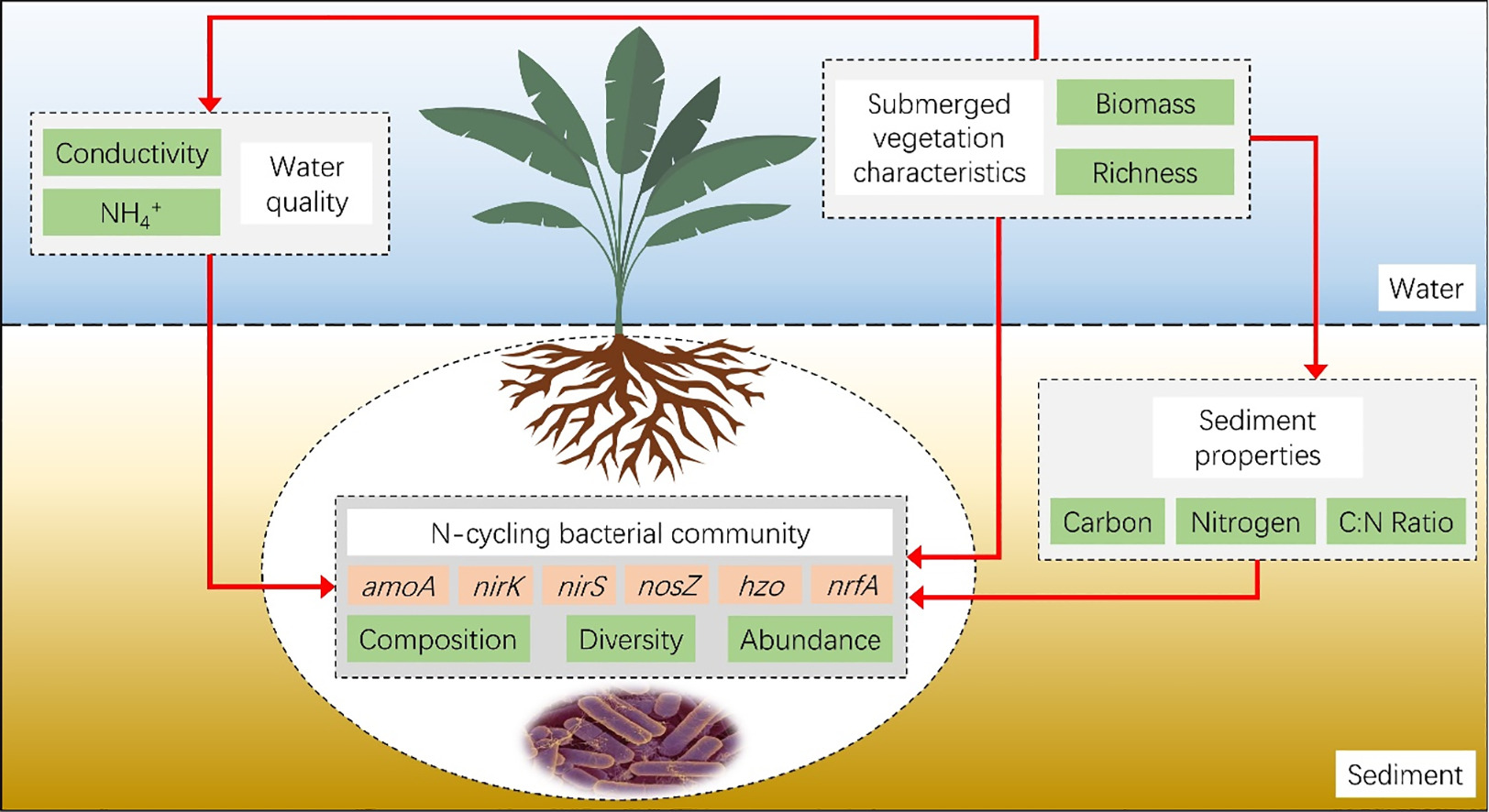
Sediment nitrogen (N) cycling is an important biological removal process for N permanently, which is driven by N-cycling microbial community. With the increasing interest in the interaction between submerged vegetation (SV) and sediment N-cycling bacterial community, there remains conflict opinions on the effects of SV on the sediment N-cycling bacterial community. Moreover, the discrimination of direct and indirect effects of SV on the N-cycling bacterial community remains unclear.
The Wetland Ecology Group at the Wuhan Botanical Garden investigated the biomass and species richness of SV and determined the ambient conditions including water quality and sediment properties in Honghu Lake (China). Functional genes were used as markers to unveil the composition, diversity and abundance of N-cycling bacterial communities via High-throughput sequencing and quantitative polymerase
The abundance and species richness of SV significantly adjusted the water quality and sediment properties, creating a particular habitat to structure N-cycling bacterial assemblages. Under the influence of well-developed SV and the associating changes in ambient carbon (C) and N conditions, the biodiversity of most N-cycling bacterial assemblages except for the anammox assemblage decreased while the abundance increased.
Research findings confirmed the significant effects of SV on the N-cycling bacterial community structure and abundance. Moreover, the direct pathway of SV affecting the N-cycling bacterial and the indirect pathway via altering the sediment organic C quantity and quality were clarified in this study.
Results cast a new light on the negative effects of high C: N ratio. It could be concluded that the better SV develops, the greater nitrogen removal occurs in lake sediments.
This research entitled "Effects of submerged vegetation on sediment nitrogen-cycling bacterial communities in Honghu Lake (China)" was published in Science of the Total Environment.
This study was supported by the National Natural Science Foundation of China, China Postdoctoral Science Foundation, the Guangdong Province Basic and Applied Basic Research Fund, the Guangdong Provincial Key Laboratory Project, and the Key Special Project for Introduced Talents Team of Southern Marine Science and Engineering Guangdong Laboratory (Guangzhou).

Effects of submerged vegetation on sediment nitrogen-cycling bacterial communities in a shallow lake (Image by WBG)

86-10-68597521 (day)
86-10-68597289 (night)

52 Sanlihe Rd., Xicheng District,
Beijing, China (100864)

